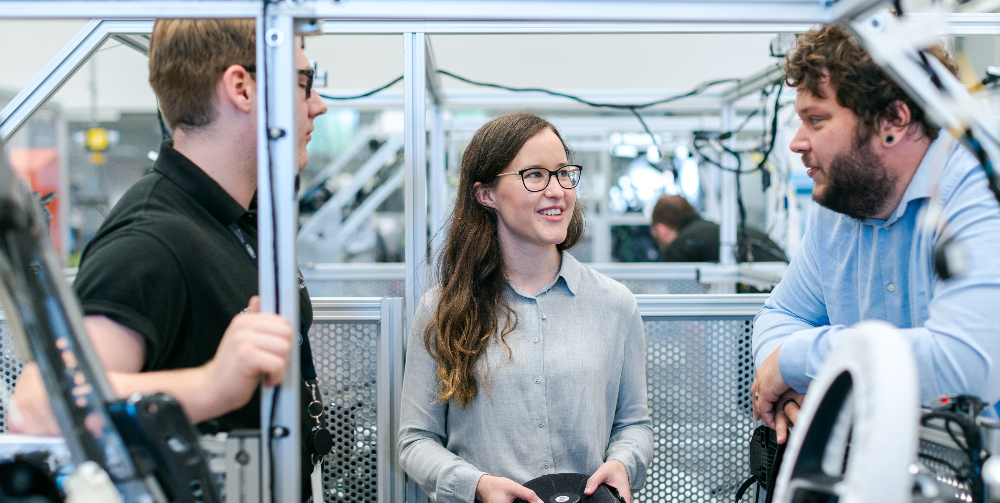
Today’s consumers desire a streamlined, haggle-free process when it comes to purchasing a car, which has led to many car manufacturers, including the ones listed above, to adopt the agency model in automotive retail.
Compared to the traditional sales model which relies on a dealership network acting as intermediaries between the manufacturer and customers, the agency model gives the manufacturer more control.
This extends to how they present cars to customers, how much they charge for them (both online and offline), and how they handle customer service and support.
Buying a new car should be relatively simple – yet the process rarely is. One of the biggest challenges can be the negotiation, as you try and find the ‘best possible price’. This can vary depending on which dealership you go to, which elongates the purchase and creates frustration.
The agency model in automotive mitigates this by having ‘fixed pricing’- just one of the advantages to adopting this approach. In this blog, we’ll be analysing how the agency model in automotive is disrupting car retail, and the effects this has on car manufacturers, dealers, and the customers it’s designed to support.
What Do We Mean By Agency Model in Automotive Retail?
The agency model in automotive retail involves manufacturers or their exclusive representatives directly selling vehicles to consumers, often with a focus on transparent pricing and a streamlined customer experience.
In turn, this reduces the reliance on independent dealerships which is a core part of the traditional sales model which usually operates through a franchise system. In this sense, a manufacturer would design and build cars before selling them to a range of dealerships, who are then responsible for selling them to customers.
This has long been the norm, but thanks to digitisation and the growth of e-commerce, customers are now expecting a seamless omnichannel experience with transparency and ease across all channels.
They want the car process to be as simple as buying a new item of clothing, rather than experience the friction that has previously existed. This comes hand-in-hand with minimal negotiation and a real focus on customer experience with sales teams guiding a customer’s purchase rather than pushing it.
The agency model is better positioned to address these needs as it gives control to the original car manufacturer. By reducing the number of intermediaries, customers interact more directly with the manufacturer or its authorised agencies which leads to a more consistent experience, rather than dealers being given free reign.
In summary, in the agency model the manufacturer would deal directly with the customer and the role of the dealership shifts from sales to product support.

COVID-19 and the Impact On the Agency Model
The agency model in automotive retail has undergone significant changes due to the impact of COVID-19. OEMs are now actively seeking ways to reduce the costs associated with distributing their vehicles once they have left the factory. This effort is driven by a desire to have greater control and visibility over the entire customer journey, from manufacturing to the final sale.
In 2021, automotive retailers experienced remarkable profitability suggesting that dealerships were making substantial profits.
However, a key point of contention arises regarding the distribution of profits. Before the pandemic, dealerships may have been offering discounts or incentives that ate into the profit margins that the OEMs could have otherwise retained. Dealerships argue that they were pressured by manufacturers to register cars quickly, possibly through these price reductions.
OEMs, on the other hand, are now faced with the challenge of managing rising manufacturing costs. These cost increases are driven by inflationary pressures, the higher production expenses associated with electric vehicles, and the growing demand for advanced in-car technology.
These reasons have made the agency model more appealing, and we’re delving further into this below.
Traditional Model vs Agency Model in Automotive Retail
To summarise the differences between the traditional model vs the agency model, we’ve compiled a list below.
This makes it easier to understand how each of them work, and how the agency model in particular is designed to improve the level of control the manufacturer has, and in turn, the standard of customer experience.
Traditional sales model
- Dealership-centric: In the traditional sales model, the focus is on the dealership network. Car manufacturers produce vehicles and distribute them to independently owned dealerships.
- Intermediaries: Dealerships act as intermediaries between the manufacturer and customers. They purchase vehicles from the manufacturer at wholesale prices and then sell them to customers.
- Showrooms: Dealerships maintain physical showrooms where customers can visit, view vehicles, test drive them, and interact with sales representatives.
- Inventory: Dealerships often carry a range of inventory, offering customers immediate access to a variety of models, trims, and options.
- Pricing: Pricing can vary among dealerships, and customers may need to negotiate with different salespeople to secure the best deal. Price transparency may vary.
- Customer service: Dealerships provide customer service, vehicle servicing, maintenance, and repairs. They also assist with financing, trade-ins, and other aspects of vehicle ownership.
Agency sales model
- Manufacturer-centric: In the agency model, the manufacturer plays a more direct role in selling vehicles. It may have its own showrooms or work with exclusive agencies to represent the brand.
- Limited intermediaries: The agency model reduces the number of intermediaries. Customers interact more directly with the manufacturer or its authorised agencies.
- Showrooms: Showrooms in the agency model, if present, often focus on brand experience and education rather than having extensive on-site inventory.
- Inventory: There may be limited on-site inventory, with an emphasis on customisation and online ordering. Vehicles are often built to order.
- Transparent pricing: Pricing is typically more transparent in the agency model, with fixed prices and fewer opportunities for negotiation.
- Customer service: The manufacturer or its agencies handle customer service, vehicle servicing, and support. They may offer maintenance packages and online services for convenience.
The Effects of the Agency Model in Automotive Retail
Whilst there are obvious benefits of the agency model, there is still a lot of uncertainty felt by those in the industry.
Some fear it will reduce the competition aspect of buying a car, and that ultimately, customers could lose out as a result. That said, let’s take a closer look.
Manufacturers
- Greater Control: With the Agency Model, manufacturers have more control over the pricing and distribution of their vehicles. This allows them to maintain consistent pricing across the market and ensures that their brand’s image is preserved.
- Improved Customer Experience: Manufacturers can provide a more uniform and standardised customer experience. This may include a consistent buying process, better integration of technology, and enhanced customer service.
- Market Data Access: Manufacturers can gather valuable data directly from customer interactions. This data can be used to better understand customer preferences and inform product development.
- Reduced Channel Conflict: The Agency Model can help reduce channel conflict with dealers, as pricing and distribution are more centralised. This can lead to better relationships with dealers and a more streamlined network.
Dealers
- Reduced Inventory Risk: Dealers under the Agency Model may carry less inventory since they’re not purchasing vehicles from the manufacturer upfront. This can lower their inventory costs and reduce the risk of holding unsold cars.
- Focus on Service and Customer Experience: Dealers can shift their focus to providing superior customer service, vehicle maintenance, and other post-sale services. This can lead to higher customer satisfaction and retention.
- Competitive Pricing: Dealers may benefit from more consistent pricing across the market, reducing the need for price haggling and price wars with neighboring dealerships.
- Reduced Capital Requirements: Since they don’t need to maintain as much inventory, dealers may require less capital, which can free up resources for other investments or expansions.
Customers
- Simplified Pricing: Customers may benefit from more transparent and consistent pricing under the Agency Model. This can make the buying process less stressful and reduce the perception of price manipulation.
- Uniform Customer Experience: A standardised buying experience, possibly facilitated by technology, can lead to a more consistent and efficient process for customers, making it easier to compare different models and brands.
- Reduced Pressure and Haggling: With set prices and a less aggressive sales approach, customers may experience less pressure and haggling when purchasing a vehicle – but it also means there’ll be no room for them to negotiate.
- Access to Direct Manufacturer Services: In some cases, customers might have direct access to manufacturer services, such as customisation options or post-sale support, potentially enhancing the overall ownership experience.

How the Agency Model in Automotive is Disrupting Car Retail
There are still a lot of unanswered questions when it comes to the agency model in automotive and how this will work going forward.
However, it is clear that the automotive industry is undergoing a significant transformation in sales and distribution models, driven by the likes of Tesla who have seen great success through this approach.
In turn, this has disrupted traditional dealership networks and generated a range of responses from established OEMs who are looking to reduce costs, optimise customer experience, and improve operational efficiency.
By avoiding conventional dealership networks, it enables manufacturers to maintain control over pricing, inventory management, and customer interactions as they are in the driving seat.
These changes can cause a lot of uncertainty for you and your dealership team. At JBA, we understand the challenges that you’re facing and we develop bespoke solutions to address those challenges. We don’t advocate a general approach, but work with you to define what you need so that we can help you get there. To find out more about how we can help, simply get in touch.


